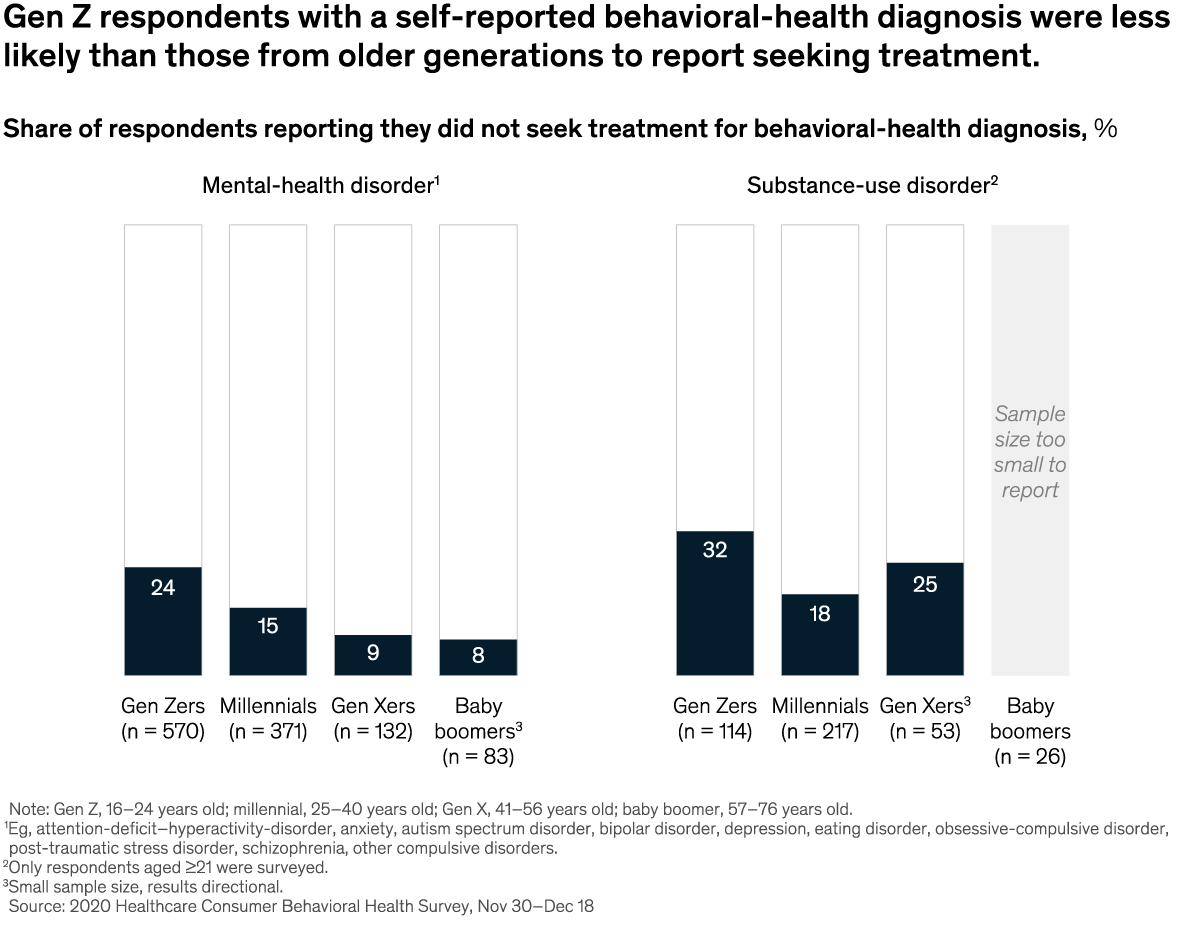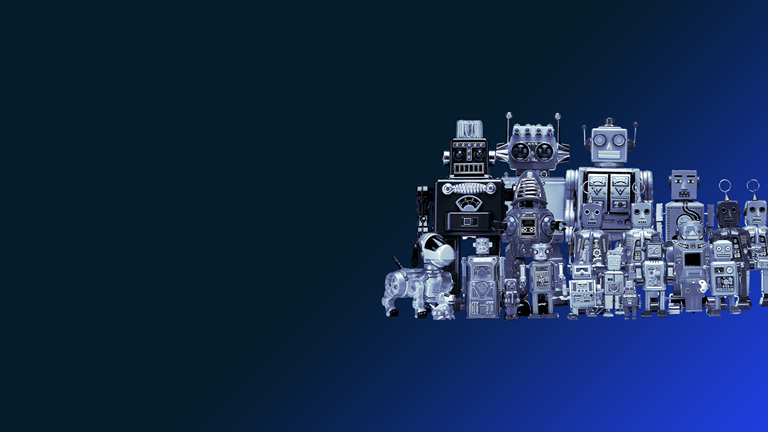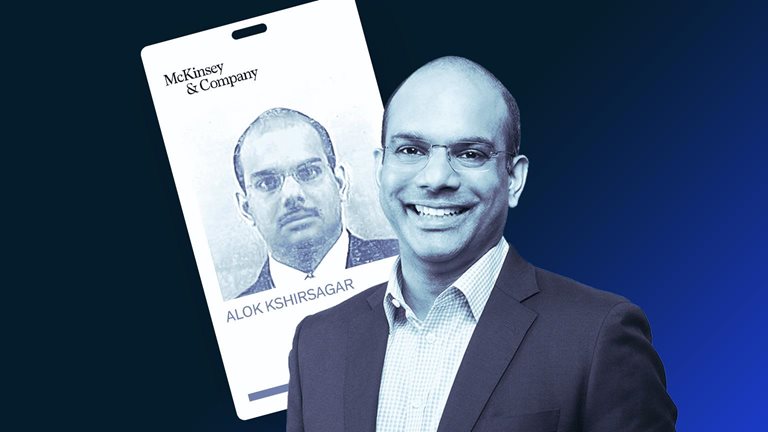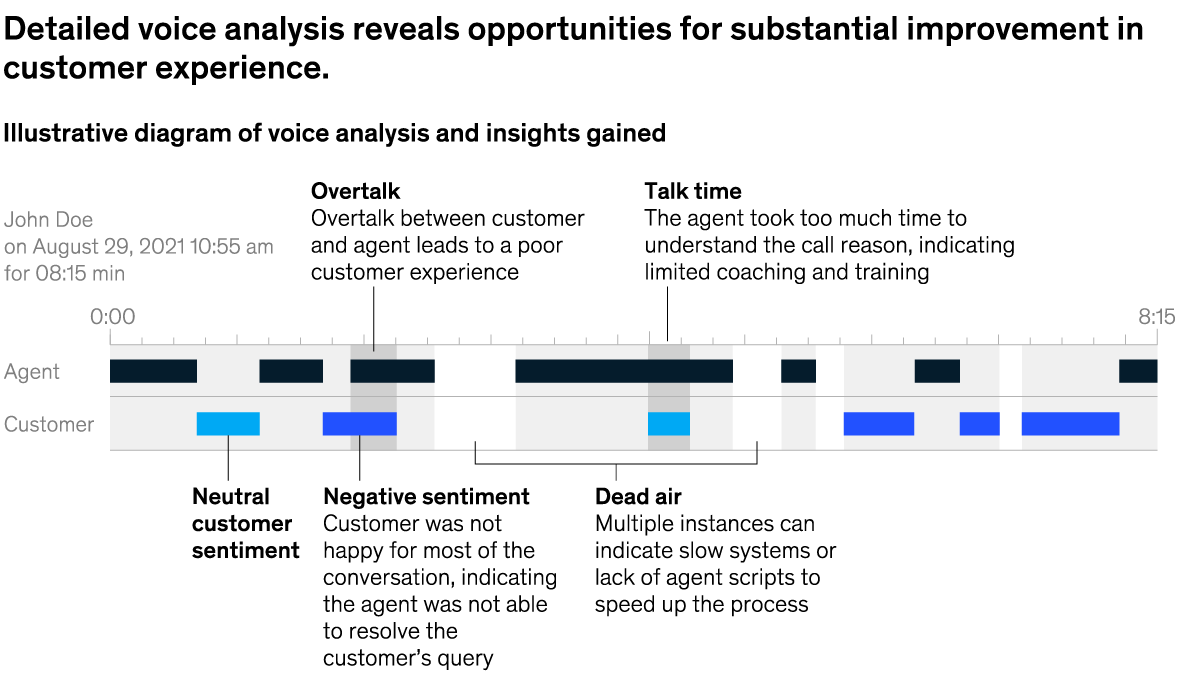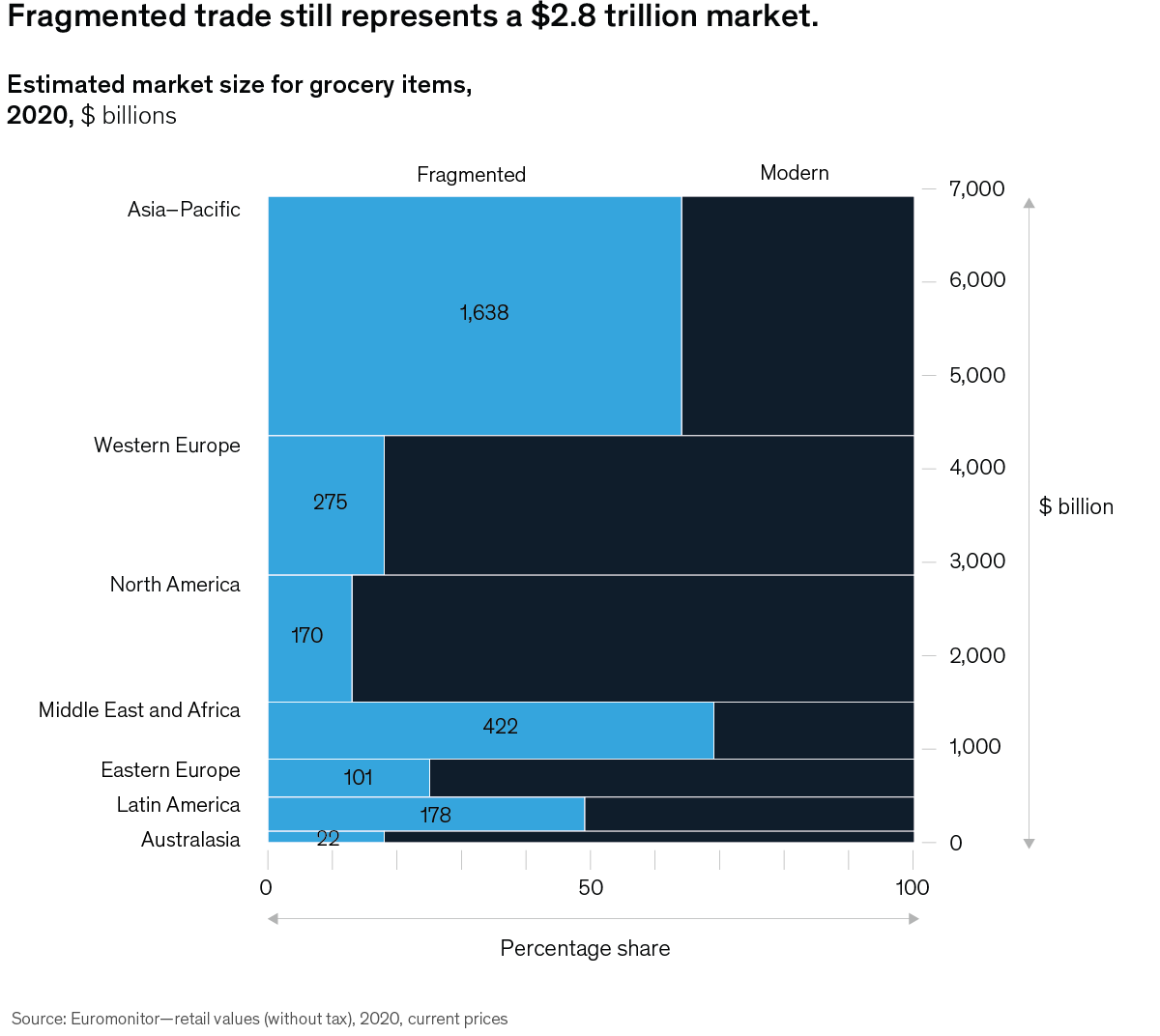Archives
- By thread 5224
-
By date
- June 2021 10
- July 2021 6
- August 2021 20
- September 2021 21
- October 2021 48
- November 2021 40
- December 2021 23
- January 2022 46
- February 2022 80
- March 2022 109
- April 2022 100
- May 2022 97
- June 2022 105
- July 2022 82
- August 2022 95
- September 2022 103
- October 2022 117
- November 2022 115
- December 2022 102
- January 2023 88
- February 2023 90
- March 2023 116
- April 2023 97
- May 2023 159
- June 2023 145
- July 2023 120
- August 2023 90
- September 2023 102
- October 2023 106
- November 2023 100
- December 2023 74
- January 2024 75
- February 2024 75
- March 2024 78
- April 2024 74
- May 2024 108
- June 2024 98
- July 2024 116
- August 2024 134
- September 2024 130
- October 2024 141
- November 2024 171
- December 2024 115
- January 2025 216
- February 2025 140
- March 2025 220
- April 2025 233
- May 2025 239
- June 2025 303
- July 2025 36
-
Invite for MD Abul: Tyk x IDC Webinar - APIs at the heart of digital strategy
Invite for MD Abul: Tyk x IDC Webinar - APIs at the heart of digital strategy
Find out what modern development practices and governance need to be adopted to maximise productivity and drive repeatable success.Hi MD Abul
Join us for an informative webinar to learn more about the priorities, challenges, and digital outcomes of a successful enterprise API Strategy from your market peers. IDC’s Market Analyst, Linus Lai will take you through the predictions & market trends for API Landscape in 2022. Find out what modern development practices and governance frameworks need to be adopted to maximise your productivity and drive secure yet repeatable success.
Martin Buhr, CEO from Tyk Technologies will share real-life examples of how organisations are using Tyk’s API Management platform to deliver better digital outcomes.
At the end of the webinar, you will receive a copy of the latest Tyk x IDC Infobrief entitled, “APIs at the Heart of Digital Strategy”.
Webinar details:
24 February 2022
9:00am UKT | 5:00 SGT
Tyk, 87a Worship Street, London, City of London EC2A 2BE, United Kingdom, +44 (0)20 3409 1911
by "Budhaditya Bhattacharya" <budha@tyk.io> - 02:02 - 9 Feb 2022 -
It’s all about people—even when it’s about tech
McKinsey&Company
Seven lessons to help generate value from tech .

Dare to go digital The news • New-tech troubles. Managers often underestimate the degree to which introducing new tech may incite fear and resentment in workers, says an MIT business school professor. The addition of new systems, technologies, and processes often leads to rank-and-file employees having to take on extra work. One common mistake that companies make when introducing new tech is having junior staffers do the training, which often doesn’t sit well with longer-tenured workers. Digital transformations aren’t straightforward, so they need employees’ cooperation to succeed. [WSJ] • Trillions on tech. Companies will spend an estimated $6.8 trillion or more on digital tech and initiatives from 2020 to 2023. Many such projects, however, end in failure. It’s tempting for business leaders to simply buy new tech or collect more data to try to achieve a digital transformation, but without broader changes in mindset, culture, and talent, those efforts won’t yield the desired benefits. Many organizations don’t have a clear idea of what the term “digital transformation” even means. At its essence, it means becoming an organization in which decisions are driven by data, not intuition. [HBR] 
Top performers are more than three times likelier than their peers to say they’ve pursued a transformation of their talent strategy in recent years. 
Our insights • People-focused plays. McKinsey surveyed hundreds of C-suite executives and tech leaders to learn what actions resulted in the most effective digital transformations. One finding is that people-focused plays delivered the most value: companies that changed the ways they attract, retain, and upskill tech talent captured the most business impact. Yet even though people-focused initiatives link closely with value creation, they’re low on many companies’ priority lists. • IT and business team up. The survey results also show that IT teams and business teams at top-performing organizations are likely to work together both to develop strategy and to deliver tech. And top performers are much more focused than others on measurement, even for metrics that aren’t tech specific. See the survey results to learn seven lessons on how tech transformations can create value. — Edited by Katherine Tam Check your tech 
Was this forwarded to you? Sign up here. Or send us feedback — we’d love to hear from you. 

Follow our thinking 


This email contains information about McKinsey’s research, insights, services, or events. By opening our emails or clicking on links, you agree to our use of cookies and web tracking technology. For more information on how we use and protect your information, please review our privacy policy. You received this email because you subscribed to the On Point newsletter. Manage subscriptions | Unsubscribe Copyright © 2022 | McKinsey & Company, 3 World Trade Center, 175 Greenwich Street, New York, NY 10007
by "McKinsey On Point" <publishing@email.mckinsey.com> - 10:14 - 8 Feb 2022 -
Talent, burnout, diversity, new power dynamics: New from McKinsey Talks Talent
the Daily read
Think ahead .
Share this email 



AN ARTICLE A DAY, PICKED BY OUR EDITORS 
Even as the pandemic persists, many organizations are asking more of their employees to return to the office. But workers’ priorities have changed, fueling the Great Attrition, as more employees demand greater flexibility when it comes to their jobs and their personal lives. “When you ask people what their number one concern is about coming back to the office, it’s work–life balance. It’s the commute,” says talent expert Bryan Hancock in the latest episode of the McKinsey Talks Talent podcast. “And at the same time, you ask people what the number one worry about staying at home is, and it’s work–life balance because there’s no boundary between home and the office.” What’s a leader to do? In this wide-ranging discussion, Hancock and fellow talent expert Bill Schaninger unpack that dichotomy, shifting power dynamics, burnout, diversity, and more. If you’re a leader, you won’t want to miss this conversation on talent and business in 2022. — Katherine Tam, digital editor, New York 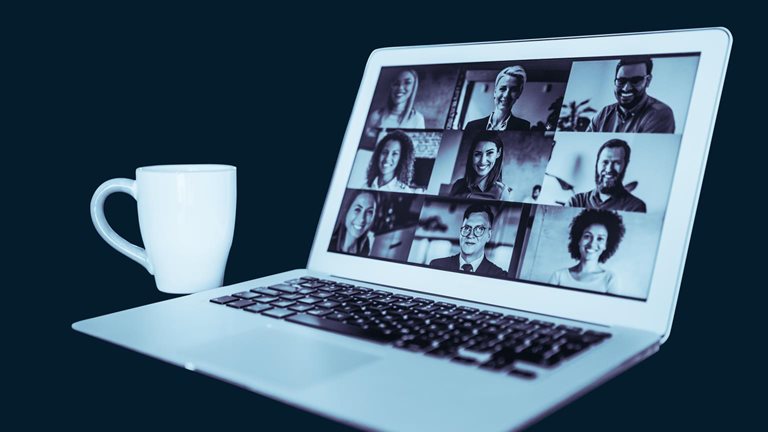
Back and forth: COVID-19’s impact on business in 2021—and today The years-long pandemic persists. How can companies continue to adapt? Think ahead 

Quote of the Day —Scott Keller, senior partner and coauthor of forthcoming McKinsey book CEO Excellence, on the six mindsets of excellent CEOs 
Chart of the Day See today’s chart 
Also New 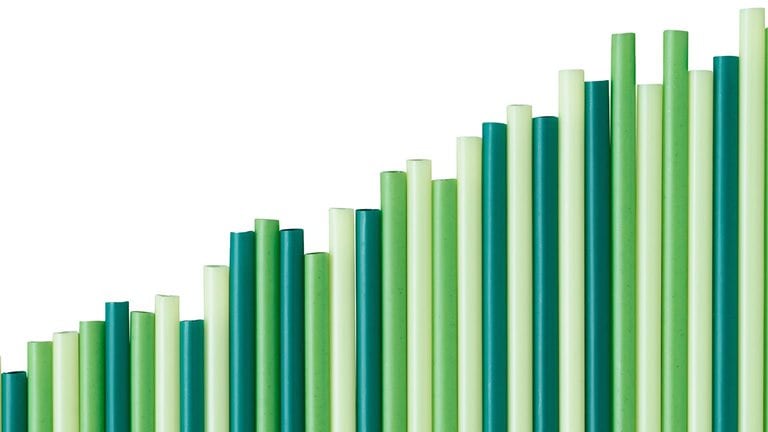

Building better capital projects through sustainability benchmarks As leaders across industries prioritize sustainability practices, a clear and defined set of metrics and benchmarks will be necessary to build sustainable capital projects. See the survey results 


How ‘Care at Home’ ecosystems can reshape the way health systems envision patient care A strategy around services in the home could enable health systems’ success in delivering patient-centered care. Explore changing medical patterns 


Unleashing the next wave of productivity in corporate business functions A how-to guide for maximizing the ROI of enterprise platform transformations in the consumer packaged goods industry Learn how to optimize 


Follow our thinking 



Share these insights Did you enjoy this newsletter? Forward it to colleagues and friends so they can subscribe too.
Was this issue forwarded to you? Sign up for it and sample our 40+ other free email subscriptions here.This email contains information about McKinsey’s research, insights, services, or events. By opening our emails or clicking on links, you agree to our use of cookies and web tracking technology. For more information on how we use and protect your information, please review our privacy policy. You received this email because you subscribed to the Daily Read newsletter. Manage subscriptions | Unsubscribe Copyright © 2022 | McKinsey & Company, 3 World Trade Center, 175 Greenwich Street, New York, NY 10007
by "McKinsey Daily Read" <publishing@email.mckinsey.com> - 06:17 - 8 Feb 2022 -
Building a better planet with satellite data
McKinsey&Company
Reach for the stars .
Share this email 



New from McKinsey & Company 
Building a better planet with satellite data Spire CEO Peter Platzer says the answers to some of Earth’s biggest problems can be found in space. Reach for the stars 



Related Reading 
Expectations versus reality: Commercial satellite constellations 
Get up to speed with McKinsey Themes 


Follow our thinking 


McKinsey Insights - Get our latest
thinking on your iPhone, iPad, or Android


Share these insights Did you enjoy this newsletter? Forward it to colleagues and friends so they can subscribe too.
Was this issue forwarded to you? Sign up for it and sample our 40+ other free email subscriptions here.This email contains information about McKinsey’s research, insights, services, or events. By opening our emails or clicking on links, you agree to our use of cookies and web tracking technology. For more information on how we use and protect your information, please review our privacy policy. You received this email because you subscribed to The Next Normal newsletter list. Manage subscriptions | Unsubscribe Copyright © 2022 | McKinsey & Company, 3 World Trade Center, 175 Greenwich Street, New York, NY 10007
by "McKinsey & Company" <publishing@email.mckinsey.com> - 12:54 - 8 Feb 2022 -
Gen Z is struggling with poor mental health. A targeted, digital approach can help.
McKinsey&Company
Pay it forward .

Disruption junction The news • More support, please. Members of Gen Z, as digitally native as they come, might have been expected to thrive in a remote working environment. But it turns out that the COVID-19 pandemic has been really tough on this cohort, whose members are just starting out in their careers and are craving more in-person engagement and mentoring. To engage Gen Z’s passion and potential, leaders can create a workplace that encourages open dialogue and the sharing of new ideas. [Fast Company] • ‘Friends’ for the first time. Gen Zers, still adjusting to the trials and tribulations of adult life, have sought comfort in the TV and fashion trends of the 1990s and early 2000s, before the internet become so ubiquitous. But while that may seem like harmless nostalgia, some experts point out that it also reflects uncertainty, anxiety, and loneliness. [Business Insider] 
Gen Zers, ranging from middle-school students to early professionals, are reporting higher rates of anxiety, depression, and distress than any other age group. 
Our insights • Why it matters. The behavioral-health challenges facing Gen Z are concerning. In a series of consumer surveys and interviews conducted by McKinsey, one in four Gen Z respondents (25%) reported feeling emotionally distressed, almost double the levels reported by millennial and Gen X respondents (13% each), and more than triple the levels reported by baby boomer respondents (8%). • How to help. Companies, healthcare leaders, and educators all have a role to play in supporting Gen Z. By creating and improving digital and social-media tools to which that generation responds, stakeholders can increase the number of Gen Zers who seek mental-health support. And because Gen Z cares deeply about diversity, there are opportunities to integrate care and early intervention by providing a more racially and ethnically diverse behavioral-health workforce. Read on to learn what actions can best meet the behavioral-health needs of Gen Z. — Edited by Barbara Tierney See the full survey 
Was this forwarded to you? Sign up here. Or send us feedback — we’d love to hear from you. 

Follow our thinking 


This email contains information about McKinsey’s research, insights, services, or events. By opening our emails or clicking on links, you agree to our use of cookies and web tracking technology. For more information on how we use and protect your information, please review our privacy policy. You received this email because you subscribed to the On Point newsletter. Manage subscriptions | Unsubscribe Copyright © 2022 | McKinsey & Company, 3 World Trade Center, 175 Greenwich Street, New York, NY 10007
by "McKinsey On Point" <publishing@email.mckinsey.com> - 12:10 - 8 Feb 2022 -
Climate risk and the opportunity for real estate
the Daily read
Adapt to change .
Share this email 



AN ARTICLE A DAY, PICKED BY OUR EDITORS 
How will climate change affect real estate? The net-zero transition is now top of mind for many in the industry. It’s no wonder: building climate intelligence will be central to value creation and strategic differentiation in real estate. The industry will also be crucial to mitigation efforts, considering that real estate drives nearly 40 percent of total global emissions. A new article lays out three actions that can help real-estate players make the climate transition—don't miss it. — Torea Frey, managing editor, Seattle 
Climate risk and the opportunity for real estate Real-estate leaders should revalue assets, decarbonize, and create new business opportunities. Here’s how. Adapt to change 

Quote of the Day “To spend a year and a half being told you’re not good enough, and finding a way to reestablish your confidence, was really important for me and carried over into what I did outside of football.” —Jason Wright, president of the Washington Commanders football team and former McKinsey partner, in a new interview from McKinsey’s My Leadership Journey series 
Chart of the Day 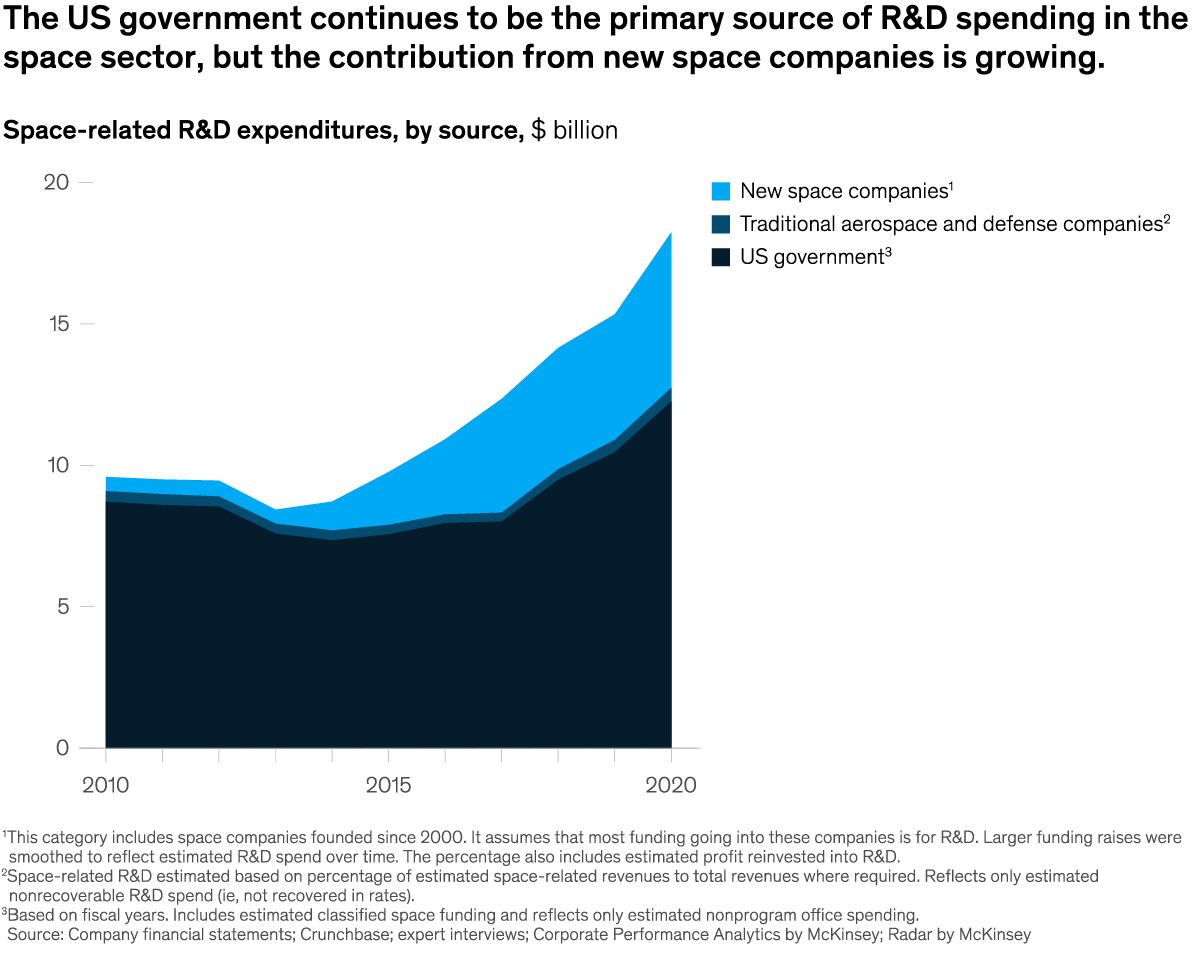
See today’s chart 
Also New 

Leveraging infrastructure investment to meet net-zero goals Investors have critical roles to play in delivering sustainable infrastructure to address the rising risks of climate change. Developing innovative solutions can accelerate the energy transition. Read the interview 


Building the US public-health workforce of the future State and local health departments have an imperative to invest in their workforces as they build toward endemic COVID-19 and improving other health outcomes. Here are six strategies to act on now. Take a new approach 


Forward Thinking on the social contract in a postpandemic world with Minouche Shafik and Andrew Sheng “Our social contract is broken. And that is at the heart of why our politics is so divided and so many citizens around the world are disappointed and frustrated.” “Modern society is killing Mother Nature. And if you kill Mother Nature, you kill ourselves. We really need to achieve a social contract between us and other humanity and also Mother Nature. And this conversation is only beginning.” Two stark views on the state of today’s social contract. Tune in 


Follow our thinking 



Share these insights Did you enjoy this newsletter? Forward it to colleagues and friends so they can subscribe too.
Was this issue forwarded to you? Sign up for it and sample our 40+ other free email subscriptions here.This email contains information about McKinsey’s research, insights, services, or events. By opening our emails or clicking on links, you agree to our use of cookies and web tracking technology. For more information on how we use and protect your information, please review our privacy policy. You received this email because you subscribed to the Daily Read newsletter. Manage subscriptions | Unsubscribe Copyright © 2022 | McKinsey & Company, 3 World Trade Center, 175 Greenwich Street, New York, NY 10007
by "McKinsey Daily Read" <publishing@email.mckinsey.com> - 06:55 - 7 Feb 2022 -
How leaders think about diversity: A guide
Leading Off
Equal opportunity .
Share this email 



ESSENTIALS FOR LEADERS AND THOSE THEY LEAD 
February is Black History Month, and a time for continued reflection on addressing racial disparities. Faced with urgent calls for equity in the workplace, organizations must take a hard look at gender and cultural representation on their executive teams. The good news is that the business case for diversity and inclusion in corporate leadership is stronger than ever; the bad news is that progress remains slow and has even declined in some cases. What should leaders do to offer a level playing field for advancement and opportunity? This week, let’s look at how to lay the turf in a systematic way. AN IDEA 
Make the business case—then go beyond it Diversity in leadership pays off. A McKinsey survey of more than 1,000 large organizations in 15 countries found that companies with the most gender and ethnic diversity on executive teams outperform less diverse companies on profitability. But diversity goes beyond the data: there is also a moral case to be made for doing the right thing. The principles of rising stakeholder capitalism call for taking into account the interests of not only shareholders but also customers, suppliers, workers, and communities, and purpose-driven organizations are looking to have a unique, positive impact on society. As these trends gather steam globally, organizations have a moral responsibility to advance equity and justice in their workplaces, including moving diverse talent into the C-suite. 
A BIG NUMBER 60 That’s the number of Black CEOs there would be if representation in the Fortune 500 matched the 12 percent Black population density of the US. But just four Black chief executives—about 1 percent of all Fortune 500 heads of companies—make the list. And though the number of women leading Fortune 500 companies has hit an all-time high of 41, they still account for only 8.1 percent of the total. Women of color are losing ground at every step in the pipeline—their representation plunges more than 75 percent between the entry level and the C-suite, and they account for only 4 percent of top leaders. If you’re moving into a CEO role, grab the opportunity to move the needle on diversity, as most major policy changes occur in the first two to three years of a CEO’s tenure. 

A QUOTE “We seem to have hit a wall.” That’s Darren Walker, president of the Ford Foundation, quoted in a New York Times article on discrimination in corporate America. Research shows that despite the efforts of many well-meaning companies, Black executives still face systemic inequity in hiring, compensation, promotion, and retention practices, and they are more likely to encounter prejudice than any other ethnic or racial group. The roots of the problem go deep and there are no easy solutions, but some emerging best practices include expanding the sources of talent, supporting Black entrepreneurship, building capabilities and skills to advance the next generation of Black leaders, and holding leaders and their organizations accountable for progress. 
A SPOTLIGHT INTERVIEW 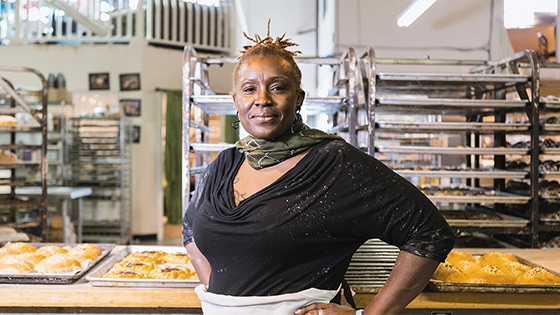
Racial wealth disparities may cost the US close to $1 trillion a year in economic output, says McKinsey partner Shelley Stewart III in this podcast on strategies to promote racial equity. “Black Americans in particular face staggering inequality that is only matched in some instances by the Native American population, at least in the US,” he says. For business leaders, a key tactical step to address this challenge is understanding the equity implications of every decision they make. “Whether it is how you recruit, promote, develop, or pay, you need to take that equity lens,” urges Stewart. He also notes the importance of investing in Black community development, education, and entrepreneurship as a way to advance Black economic mobility. 
IN SEARCH OF EXCELLENCE 
There’s no checklist for what makes a good CEO, but outstanding chief executives have certain attributes in common, new McKinsey research shows. For example, one quality is universal: “Regardless of context, regardless of circumstance, regardless of industry, there is an aspect around great CEOs: great CEOs are bold,” says McKinsey’s Vik Malhotra in this Author Talks interview. To increase diversity in their leadership ranks, organizations should consider the fundamental qualities that make C-suite leaders exceptional—and enhance them with the strengths that diverse perspectives and experiences can bring. Lead equitably. — Edited by Rama Ramaswami, a senior editor in McKinsey’s Stamford office 

Follow our thinking 



Share these insights Did you enjoy this newsletter? Forward it to colleagues and friends so they can subscribe too.
Was this issue forwarded to you? Sign up for it and sample our 40+ other free email subscriptions here.This email contains information about McKinsey’s research, insights, services, or events. By opening our emails or clicking on links, you agree to our use of cookies and web tracking technology. For more information on how we use and protect your information, please review our privacy policy. You received this email because you subscribed to the Leading Off newsletter. Manage subscriptions | Unsubscribe Copyright © 2022 | McKinsey & Company, 3 World Trade Center, 175 Greenwich Street, New York, NY 10007
by "McKinsey Leading Off" <publishing@email.mckinsey.com> - 02:15 - 7 Feb 2022 -
The sporting-goods industry gets back in shape
McKinsey&Company
Get in the game .

Game on The news • Games people play. Can’t get to the gym? Virtual workouts are almost as good as gym sessions—they burn a significant number of calories and can be done in small spaces. Some of the new virtual-reality (VR) apps offer stimulating visuals and sophisticated tracking abilities while you’re boxing, dancing, or cycling. Steep prices and bulky headsets are among the downsides, but fitness buffs with an appetite for novelty are giving VR a try. [WSJ] • Movers and shakers. Wearing a fitness tracker might help you not just monitor your exercise but also intensify it. A study of more than 16,000 people showed that those who started wearing exercise monitors increased their levels of physical activity. But smart watches or wearables alone won’t get you off the couch. They work best in combination with other programs and incentives for changing fitness habits, experts say. [CNN] 
Digital forms of individual or community-based exercise have become more popular and have created new possibilities for sporting-goods companies. 
Our insights • Hitting it out of the park. The sporting-goods market slumped at the start of the pandemic but has made a swift comeback, with consumers in China and the US fueling recovery. In sportswear, growth is expected to reach 8% to 10% a year through 2025, with the market totaling €395 billion globally. But profits are becoming concentrated among a small group of players, which means the rest must adapt their business models quickly. • Be on the ball. Last year saw major changes in the sporting-goods industry as sales recovered to almost prepandemic levels. The trends we highlighted in 2021—among them, the explosion of digital commerce and changes in consumer behavior—will continue this year, but exciting new developments are shaping up as well. Read our analysis of the top five trends that will transform the sporting-goods market in 2022 and the strategies companies must adopt to meet consumer expectations. — Edited by Rama Ramaswami Play for keeps 
Was this forwarded to you? Sign up here. Or send us feedback — we’d love to hear from you. 

Follow our thinking 


This email contains information about McKinsey’s research, insights, services, or events. By opening our emails or clicking on links, you agree to our use of cookies and web tracking technology. For more information on how we use and protect your information, please review our privacy policy. You received this email because you subscribed to the On Point newsletter. Manage subscriptions | Unsubscribe Copyright © 2022 | McKinsey & Company, 3 World Trade Center, 175 Greenwich Street, New York, NY 10007
by "McKinsey On Point" <publishing@email.mckinsey.com> - 12:34 - 7 Feb 2022 -
The week in charts
the Daily read
Carbon dioxide emissions, health equity, and more .
Share this email 



ALL THE WEEK’S DATA THAT'S FIT TO VISUALIZE 
Our Charting the path to the next normal series offers a daily chart that helps explain a changing world—during the pandemic and beyond. In case you missed them, this week’s graphics explored energy’s share of carbon-dioxide emissions, health equity in the workplace, the banking industry’s great divergence in valuations, why fragmented retail is poised to be transformed by “eB2B” players, and the value of human voice to customer experience. FEATURED CHART The price of civilization 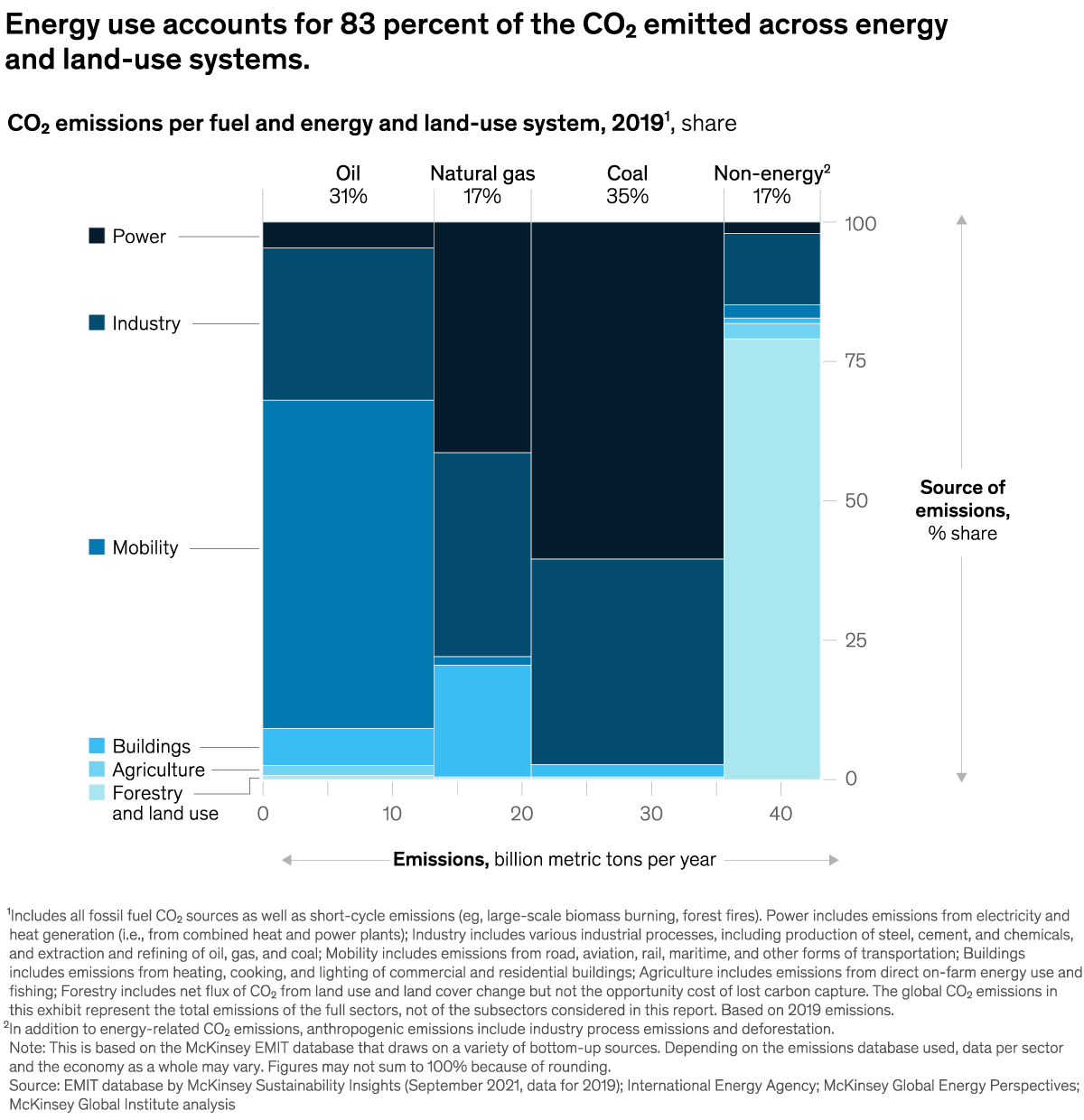
See more 



This week’s other select charts Is that covered? Banks get bypassed B2B still ordering in analog How may I assist you today? 

Follow our thinking 



Share these insights Did you enjoy this newsletter? Forward it to colleagues and friends so they can subscribe too.
Was this issue forwarded to you? Sign up for it and sample our 40+ other free email subscriptions here.This email contains information about McKinsey’s research, insights, services, or events. By opening our emails or clicking on links, you agree to our use of cookies and web tracking technology. For more information on how we use and protect your information, please review our privacy policy. You received this email because you subscribed to The Week in Charts newsletter. Manage subscriptions | Unsubscribe Copyright © 2022 | McKinsey & Company, 3 World Trade Center, 175 Greenwich Street, New York, NY 10007
by "McKinsey Week in Charts" <publishing@email.mckinsey.com> - 04:00 - 5 Feb 2022 -
How to get a grip on unnecessary interactions at work
McKinsey&Company
Plus, address burnout to avoid a talent crisis .
Share this email 



Monthly Highlights, February 2022 Inefficient meetings and incessant emails can zap you of your energy, but did you know they’re also detrimental to your organization’s performance? Pointless interactions can affect your company’s productivity, speed, and innovation, but the right tools and techniques can help. This month, our featured stories look at why high-quality collaboration is key to getting work done, as well as why women in corporate America are exhausted, stressed, and burned out—and what leadership can do to avoid a talent crisis. Other highlights in this month’s issue include the following topics: - the connection between purpose and environmental, social, and governance (ESG) topics, and how to embed them in organizations’ lived experiences
- how business leaders can respond to the three-phase ripple effect in the economy
- how companies can rebuild their price-negotiation capabilities and long-term resilience
- the five trends shaping the sporting-goods industry in 2022
Editor’s choice 

If we’re all so busy, why isn’t anything getting done? With endless meetings, incessant emails, and casts of thousands, companies have mastered the art of unnecessary interactions. Winning in the next normal requires much more focus on true collaboration. Collaborate and innovate 





The state of burnout for women in the workplace Women are doing more to support employee well-being but face higher stress levels as a result. Here’s how leaders can help. Listen up 




THIS MONTH’S HIGHLIGHTS 
The role of ESG and purpose Answering three questions about purpose and environmental, social, and governance issues can help business leaders zero in on what matters most for their organizations. Pursue purpose 

The CEO agenda in 2022: Harnessing the potential of growth jolts Despite uncertainties, the US economy is robust. The year ahead could jolt further growth. 7 tests 

How to deal with price increases in this inflationary market The return of inflation makes price negotiation a more demanding—and strategically critical—capability. Build long-term resilience 
Sporting goods 2022: The new normal is here The sporting-goods industry continues to evolve amid increased health awareness, shifting channel preferences, and rising sustainability concerns. Sporting-goods players need to adapt to five trends shaping the industry in 2022. Read the report 

Bias busters: A better way to brainstorm Structured conversation during brainstorming sessions removes some of the risks that can thwart honest discussion. Look at it this way 

The Fourth Industrial Revolution will be people powered Companies at the forefront of the technology frontier are empowering their workers with digital technologies—and the skills they need to use them. From aspiration to reality 
ALSO NEW A military veteran knows why your employees are leaving The raw-materials challenge: How the metals and mining sector will be at the core of enabling the energy transition Author Talks: How to gain a competitive edge with organizational culture Space: Investment shifts from GEO to LEO and now beyond Emphasizing the S in ESG Redefining corporate functions to better support strategy and growth Risk and resilience in consumer-goods supply chains Nurses and the Great Attrition The powerful role financial incentives can play in a transformation Author Talks: How to conquer fear, prepare for death, and embrace your power Game on: An interview with Microsoft’s head of gaming ecosystem 
SPECIAL FEATURES 
The net-zero transition: What it would cost, what it could bring Governments and companies around the world are pledging to achieve net-zero emissions of greenhouse gases. What would it take? Fulfill the ambition 

My Leadership Journey McKinsey created the Connected Leaders Academy to equip Black, Hispanic, Latino, and Asian leaders with the network and capabilities to achieve their professional aspirations. See the interviews 
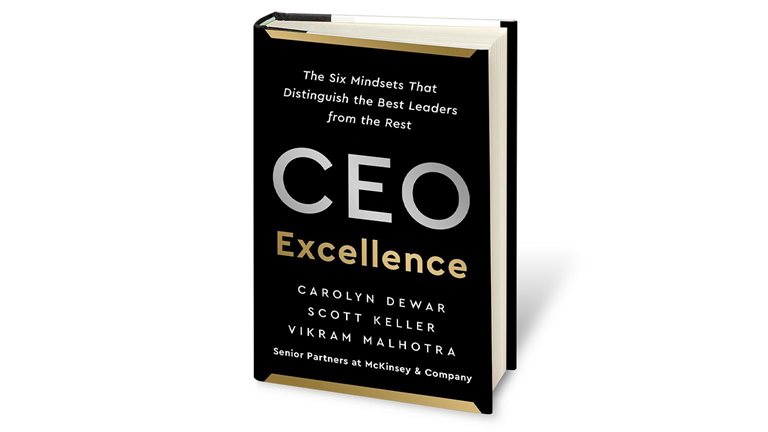
CEO Excellence What are the six mindsets that distinguish the best leaders from the rest? Find out with the #CEOExcellenceBook. Preorder now 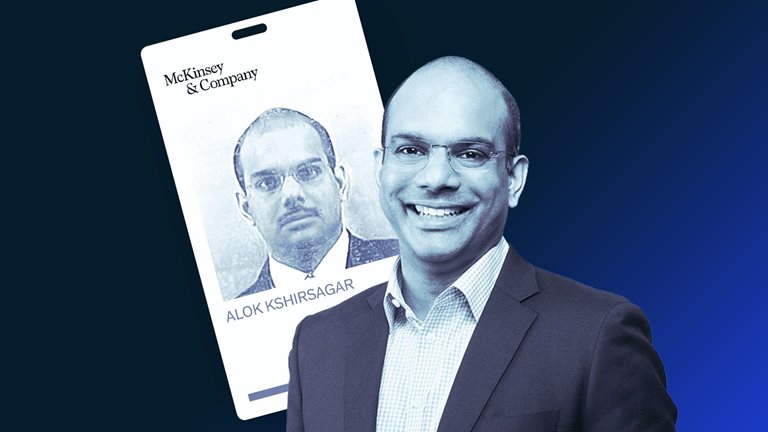
My Rookie Moment McKinsey senior colleagues share their formative early-career experiences to help you navigate yours. Watch episode 6 

McKinsey Classics Do you work with jerks? You owe it to yourself and your employees to read our 2007 classic “Building the civilized workplace.” Rewind 
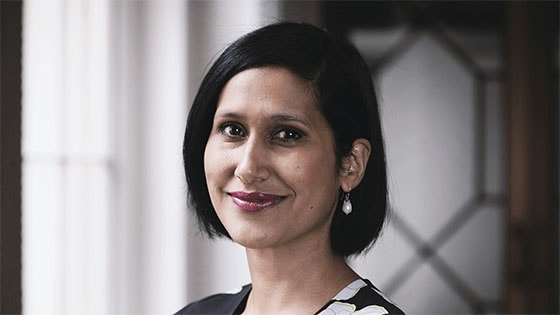
Intersection Read a sample of Intersection and sign up for it or any of our more than 40 free email subscriptions. Subscribe — Curated by Eleni Kostopoulos, a digital publishing manager in McKinsey’s New York office 

Follow our thinking 


McKinsey Insights - Get our latest
thinking on your iPhone, iPad, or Android


Share these insights Did you enjoy this newsletter? Forward it to colleagues and friends so they can subscribe too.
Was this issue forwarded to you? Sign up for it and sample our 40+ other free email subscriptions here.This email contains information about McKinsey’s research, insights, services, or events. By opening our emails or clicking on links, you agree to our use of cookies and web tracking technology. For more information on how we use and protect your information, please review our privacy policy. You received this email because you are a registered member of our Monthly Highlights newsletter. Manage subscriptions | Unsubscribe Copyright © 2022 | McKinsey & Company, 3 World Trade Center, 175 Greenwich Street, New York, NY 10007
by "McKinsey Highlights" <publishing@email.mckinsey.com> - 11:28 - 5 Feb 2022 -
My Rookie Moment: Being bold
the Daily read
Watch the episode .
Share this email 



AN ARTICLE A DAY, PICKED BY OUR EDITORS 
Taking a leap of faith is never easy, but it’s often necessary to propel you forward in your career. After all, with great risk comes great reward, as they say. Ready to leave your comfort zone? Episode 6 of the My Rookie Moment video series can help. In it, McKinsey senior colleagues talk about the bold career moves they've made, including having the courage to walk away from a project that wouldn't deliver impact and tangible results. Find out how those moments led to new opportunities and professional growth—and stay tuned for the next episode, “Authorship,” coming soon. — Joyce Yoo, digital editor, New York My Rookie Moment: Being bold Taking a leap of faith is almost always nerve-racking, but a bold move can yield great rewards and lead to new opportunities. In this episode, Brian Elliott, Alok Kshirsagar, Cindy Levy, Rob Palter, and Drew Ungerman share stories of how taking the path less traveled, mustering up the confidence to lead a big presentation, going off script, and trusting their instincts helped them stretch their capabilities and achieve success. Watch the episode 

Quote of the Day “I’ll always remember that someone once said to me, ‘You’ve done well, but don’t forget to send the elevator back down.’ I would like my brand to be the person who kept sending the elevator back down and getting more people to have careers like I have had.” —Barry Lawson Williams, founder of Williams Pacific Ventures, on being intentional and being lucky, in a new interview from McKinsey's My Leadership Journey series 
Chart of the Day See today's chart 
Also New 

Toward smart production: Machine intelligence in business operations A detailed study of machine intelligence in industrial and manufacturing operations reveals the surprisingly different paths companies can take. But a group of leaders shares similar characteristics. Leverage advanced technology 


Upgrade the grid: Speed is of the essence in the energy transition The energy transition will require a dramatic increase in capital spending on the electric grid, delivered at an unprecedented pace. Improving project success is paramount to reaching net zero. Take bold action 


Why private equity sees life and annuities as an enticing form of permanent capital Private acquisitions of in-force books are growing. Here’s a playbook for those considering market entry, those already in, and insurers wondering how to respond. Learn about entry strategies 


Follow our thinking 



Share these insights Did you enjoy this newsletter? Forward it to colleagues and friends so they can subscribe too.
Was this issue forwarded to you? Sign up for it and sample our 40+ other free email subscriptions here.This email contains information about McKinsey’s research, insights, services, or events. By opening our emails or clicking on links, you agree to our use of cookies and web tracking technology. For more information on how we use and protect your information, please review our privacy policy. You received this email because you subscribed to the Daily Read newsletter. Manage subscriptions | Unsubscribe Copyright © 2022 | McKinsey & Company, 3 World Trade Center, 175 Greenwich Street, New York, NY 10007
by "McKinsey Daily Read" <publishing@email.mckinsey.com> - 07:18 - 4 Feb 2022 -
It’s time to balance the global balance sheet, a new report says
Leading Off
Asset classes .
Share this email 



Our best ideas, quick and curated | FEBRUARY 4, 2022 View in browser 
This week, applying balance-sheet principles to the global economy. Plus, a conversation about what it really means to embrace stakeholder capitalism, and an ambitious goal for zero-carbon shipping. 
The world has never been wealthier. But how are nations using that wealth? The McKinsey Global Institute came at that question from a novel angle, borrowing a page from the corporate world: the balance sheet. The report, The rise and rise of the global balance sheet: How productively are we using our wealth?, looks at the underlying health and resilience of the global economy after two decades of financial turbulence and more than ten years of heavy central bank intervention, punctuated by the pandemic. It found much to be grateful for, particularly that global net worth more than tripled between 2000 and 2020. A broken link. Yet across ten countries that account for about 60 percent of global GDP—Australia, Canada, China, France, Germany, Japan, Mexico, Sweden, the United Kingdom, and the United States—the historic link between the growth of net worth and the growth of GDP no longer holds. This divergence emerged as asset prices rose, but not as a result of 21st-century trends like the growing digitization of the economy. Instead, the increase mainly reflects valuation gains in real assets, rather than investment in productive assets that drive economies. The most significant component was real estate, which in 2020 accounted for two-thirds of net worth. Paradigm shift. The report delves into whether the expansion of global balance sheets and net worth relative to GDP marks an economic paradigm shift, or if it could precede a reversion to the historical mean, softly or abruptly. One clear way to achieve a soft rebalancing is for companies, individuals, and even governments to redirect capital to more productive and sustainable uses. This would not only support growth and the environment but also protect global wealth and financial systems. How can business leaders respond? Several scenarios are possible, including raising the productivity of the workforce with capital investment that complements rather than displaces employees. Many corporations today have excess liquidity that they could deploy. Leaders of financial institutions, meanwhile, could develop financing mechanisms aimed at matching capital to new growth opportunities while limiting debt creation for asset transactions at ever-rising prices. Shifting priorities. Policy makers, for their part, could encourage rebalancing by removing barriers to investment in the economy and focusing on bridging gaps through sustainability, affordable housing, and other efforts. Tools already exist to propel these endeavors, such as reforming zoning regulations that limit the availability of affordable real estate; pulling tax levers that alter the taxation of capital and property gains relative to income; and getting more serious about carbon pricing and regulation. Assessing the global balance sheet provides a fresh way of looking at the macroeconomic context in which businesses, governments, households, and financial institutions operate, and also serves as a jumping-off point for assessing risks and capturing benefits in the event of a global rebalancing. 
OFF THE CHARTS The office gets a new look The uptick in remote and hybrid work is causing organizations to rethink how they use their office space. In our survey of senior executives about their current priorities and future plans for transforming SG&A activities, more than 50 percent of respondents said they are optimizing their real-estate portfolios or have already done so. At the top of their list of priorities are flexible desk arrangements and early lease termination. 
Check out our chart of the day here. 

PODCAST The long and short (term) of it Stakeholder capitalism is the buzzy term for business practices that strive to achieve more than profits and a high stock price. But what does benefiting all stakeholders really entail? And how do business leaders put the aspiration into practice? In this episode of the Inside the Strategy Room podcast, two experts lay out the case for stakeholder capitalism and why it continues to matter. “If you are working toward gender parity or mitigating your environmental footprint, that takes time. The markets and your stakeholders will be patient if they know you are making progress,” said McKinsey senior partner Dame Vivian Hunt. “No aspect of business is just ‘trust me and see.’ You need metrics and evidence.” 
MORE ON MCKINSEY.COM Green corridors: A lane for zero-carbon shipping | Zero-emission fuels and vessels will need to start being deployed at scale over the next decade to achieve full decarbonization of the shipping sector by 2050. This ambitious goal could be catalyzed by green corridors. Are you chasing the right digital assets? | Success in digital M&A requires a clear strategy that guides target selection, due diligence, and integration. Ensuring that targets can fulfill the acquirer’s ambitions calls for companies to adapt how they approach each phase of the deal. Risk and resilience in consumer-goods supply chains | While many companies found they could handle short surges in demand for a specific product, on the whole, consumer-goods supply chains have proved vulnerable to shocks. Here’s how to strengthen them for the future. 
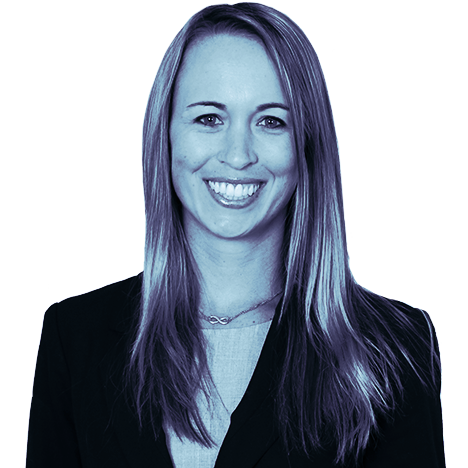

WHAT WE’RE READING Anna Pione Anna Pione, a partner in the New York office, leads McKinsey’s consumer health and wellness service line, including the firm’s global research on the Future of Wellness, aimed at better understanding how consumers approach wellness across fitness, health, nutrition, and other factors. In the same way I love doing consumer research to understand how other people think and why they make the decisions they do, I love reading books that provide a window into lives, perspectives, and experiences that are completely different from mine. Consultants love to organize their thoughts in threes (three points, three questions, three solutions), and I guess that’s rubbed off because my reading favorites tend to fall into one of three categories. Fiction that creates a powerful story through interwoven narratives There There, the first novel by Tommy Orange, a member of the Cheyenne and Arapaho tribes of Oklahoma, weaves together the stories of 12 Native Americans as they come together for the Big Oakland Powwow. The characters (some of whom are related) humanize the complex and painful history of urban American Indians who, as the author writes, “know the sound of the freeway better than we do rivers.” They each grapple with their cultural inheritance, seeking family and belonging. At the same time, they are clearly individuals on their own paths, and there’s plenty of personality and warmth even as the novel drives home how the history of Native mistreatment continues to reverberate. A Burning by Megha Majumdar, another debut novel, is a cautionary tale of what can happen when people make decisions based on ambition. It focuses on the intertwined fate of three characters after a terrorist attack in contemporary India—a Muslim girl who makes a pointed comment about the attack on Facebook, an opportunistic teacher, and a charismatic outcast who dreams of fame. While the characters inhabit the same city, their views of what constitutes reality couldn’t be more different. For me, this novel was a captivating window into another culture while at the same time highlighting the corrupting influence of power and the pitfalls of justice by popular opinion. True stories that inspire Unbroken: A World War II Story of Survival, Resilience, and Redemption by Laura Hillenbrand is one of the best examples I’ve found of a life story that seems too unbelievable to be real. It focuses on Louis Zamperini, a World War II veteran who was an Olympic track star, an army officer, and a survivor of three prisoner-of-war camps in Japan after being stranded in the Pacific Ocean for 47 days. I found it fascinating that even after he survived this extraordinary series of events, his biggest challenge came after he returned home and had to grapple with what had transpired. It is one thing to imagine losing a limb or one of your senses, but what if you woke up one day and had literally lost your mind? Brain on Fire: My Month of Madness by Susannah Cahalan is an insightful portrayal of an out-of-body experience in which the author suffers from a rare, rapid-onset disease that transforms her personality and causes her to suffer paranoid delusions until she is eventually able to uncover a diagnosis and start treatment. For me, the memoir raised questions about what truly defines a personality if it can be altered so easily with no external event. Evidence-based narratives that help me better understand myself and others Consultants are known for being perpetually sleep deprived, and I am no exception, which made Why We Sleep: Unlocking the Power of Sleep and Dreams by Matthew Walker a fascinating wake-up call (so to speak). The stats are compelling: for example, in one study, getting even six hours of sleep a night for ten days was the same as going without sleep for 24 hours straight. Reading this book empowered me to think about and prioritize my own sleep habits (and more importantly, those of my teams) for the better. Sapiens: A Brief History of Humankind by Yuval Noah Harari is an excellent survey course on the progress of human evolution. Complex topics, including key inflection points of humanity (for example, agricultural revolution, scientific revolution), are covered in an accessible way with insightful commentary on why things have evolved the way they have. It made me reconsider how some issues facing modern society have a fundamental duality, such as economic opportunity/freedom of choice about whom one marries and where one lives and works. — Edited by Barbara Tierney Share this What We’re Reading 



BACKTALK Have feedback or other ideas? We’d love to hear from you. 
Tell us what you think 

Follow our thinking 



Share these insights Did you enjoy this newsletter? Forward it to colleagues and friends so they can subscribe too.
Was this issue forwarded to you? Sign up for it and sample our 40+ other free email subscriptions here.This email contains information about McKinsey’s research, insights, services, or events. By opening our emails or clicking on links, you agree to our use of cookies and web tracking technology. For more information on how we use and protect your information, please review our privacy policy. You received this email because you subscribed to The Shortlist newsletter. Manage subscriptions | Unsubscribe Copyright © 2022 | McKinsey & Company, 3 World Trade Center, 175 Greenwich Street, New York, NY 10007
by "McKinsey Shortlist" <publishing@email.mckinsey.com> - 02:54 - 4 Feb 2022 -
Droughts and disappearing aquifers: The future of water will determine our own
McKinsey&Company
Water, water, (no longer) everywhere .

Water world The news • Water is life. As California and the Western US grapple with a decades-long “megadrought,” we’re reminded of previous attempts from as far back as the earliest civilizations to control water. For instance, ancient civilizations built irrigation systems to keep their crops alive while also poisoning water or withholding it from enemies during conflicts. Globally, 40% of the population suffers from a lack of fresh water. [WSJ] • Dwindling groundwater. One-third of the global population relies on groundwater as their sole source of drinking water. In parts of the Western and Midwestern US, however, drought and over-irrigation are depleting reserves of this precious resource. Major aquifers supplying water for drinking and for growing crops are drying up, threatening the livelihoods of generations of farmers 100 years after the Dust Bowl. [Atlantic] 
“The way in which we deal with water is ultimately not a technical question. It’s a political question … a question of values, and even in some ways of morals and ethics.” 
Our insights • Why it matters. Water is getting more attention from political leaders, says Giulio Boccaletti, the author of Water: A Biography and a former McKinsey partner. The changing climate is one reason; another is that “the institutions and infrastructure that we built to protect us from water events are also beginning to fail with greater frequency,” he explains. Now is the time to reflect upon why that is and how we move forward. • ‘A continuous cycle.’ There isn’t “some magical silver bullet” that will fix the world’s water problems, says Boccaletti. Instead, the answer is “a continuous cycle of adaptation and making sure that what we should do with our landscape is at the top of public debate and at the heart of public discourse.” To learn how water has shaped history, how different societies have dealt with water, and what’s needed to address the water issues of today and tomorrow, read the full interview, part of our Author Talks series. — Edited by Katherine Tam Dive in 
Was this forwarded to you? Sign up here. Or send us feedback — we’d love to hear from you. 

Follow our thinking 


This email contains information about McKinsey’s research, insights, services, or events. By opening our emails or clicking on links, you agree to our use of cookies and web tracking technology. For more information on how we use and protect your information, please review our privacy policy. You received this email because you subscribed to the On Point newsletter. Manage subscriptions | Unsubscribe Copyright © 2022 | McKinsey & Company, 3 World Trade Center, 175 Greenwich Street, New York, NY 10007
by "McKinsey On Point" <publishing@email.mckinsey.com> - 12:12 - 4 Feb 2022 -
How to boost consumer relationships and grow your brand, according to Google's Neil Hoyne
the Daily read
Use data strategically .
Share this email 



AN ARTICLE A DAY, PICKED BY OUR EDITORS 
Ever signed up for a gym membership, pledging to go weekly, then only worked out a handful of times that year? Sure, buying a membership is a tangible sign of progress, but it’s not enough to get into better shape. Companies fall into a similar trap in viewing technology as a panacea, says Google’s Neil Hoyne, author of Converted: The Data-Driven Way to Win Customers’ Hearts. “[Companies] were saying, ‘With software, this will unlock all of our data.’” A new interview with Hoyne from McKinsey’s Author Talks series explains why it’s not that easy, what actually makes a difference, and how to boost consumer relationships and grow your brand. Check it out. — Torea Frey, managing editor, Seattle 
Author Talks: Building consumer trust with Google’s Neil Hoyne Without effective leadership and a clear strategy, software can only solve so much. Use data strategically 

Quote of the Day “We asked consumers to choose between more natural or more effective products, and we saw that in a number of categories—and this was really shocking—consumers were more likely to choose natural products over effective ones.” —Partner Anna Pione, on surprising insights from a survey of 7,500 consumers in six countries, in "How to thrive in the global wellness market," the latest from the McKinsey on Consumer and Retail Podcast 
Chart of the Day 
See today’s chart 
Also New 

How to be an excellent CEO: Be bold See what the authors of forthcoming McKinsey book CEO Excellence have to say about the “secret sauce” behind the best CEOs in this first video of a 7-part series, and stay tuned for more on the #CEOExcellenceBook in the weeks ahead. Watch the video 


The labor market is upside down. Here’s what CEOs can do about it Business leaders can play a key role in easing labor market pressure and helping to make sustainable and inclusive growth a reality. 3 steps to take 


COVID-19: Implications for business The postpandemic world calls for fresh leadership ideas. Get updated 


Follow our thinking 



Share these insights Did you enjoy this newsletter? Forward it to colleagues and friends so they can subscribe too.
Was this issue forwarded to you? Sign up for it and sample our 40+ other free email subscriptions here.This email contains information about McKinsey’s research, insights, services, or events. By opening our emails or clicking on links, you agree to our use of cookies and web tracking technology. For more information on how we use and protect your information, please review our privacy policy. You received this email because you subscribed to the Daily Read newsletter. Manage subscriptions | Unsubscribe Copyright © 2022 | McKinsey & Company, 3 World Trade Center, 175 Greenwich Street, New York, NY 10007
by "McKinsey Daily Read" <publishing@email.mckinsey.com> - 06:49 - 3 Feb 2022 -
Forward Thinking on the social contract in a postpandemic world
McKinsey&Company
Tune in
Share this email 



New from McKinsey & Company 
Forward Thinking on the social contract in a postpandemic world Two stark views from Minouche Shafik and Andrew Sheng on the state of today’s social contract. Tune in 


Explore this and future episodes of the McKinsey Global Institute’s Forward Thinking podcast on our site, and subscribe to ensure you never miss a new one. Subscribe via Apple Podcasts, Google Podcasts, Spotify, and Stitcher. 
Related Reading 
The social contract in the 21st century 
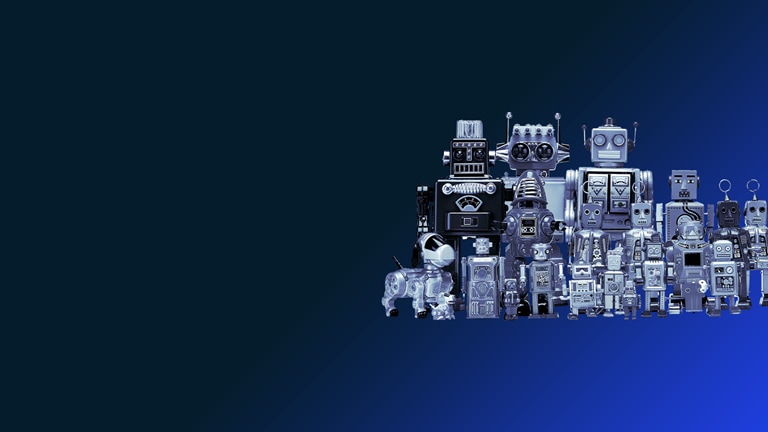
Get up to speed with McKinsey Themes 


Follow our thinking 


McKinsey Insights - Get our latest
thinking on your iPhone, iPad, or Android

This email contains information about McKinsey’s research, insights, services, or events. By opening our emails or clicking on links, you agree to our use of cookies and web tracking technology. For more information on how we use and protect your information, please review our privacy policy. You received this email because you subscribed to our McKinsey Global Institute alert list. Manage subscriptions | Unsubscribe Copyright © 2022 | McKinsey & Company, 3 World Trade Center, 175 Greenwich Street, New York, NY 10007
by "McKinsey & Company" <publishing@email.mckinsey.com> - 02:22 - 3 Feb 2022 -
Brand new. Built for you. The perfect package for every project.
And the perfect discount to help you get started.

Turn plans into projects. Stuck on figuring out the “how” and finding the “who”?
Our new Projects feature is one step ahead of you.
It’s as easy as hitting that “create new project” button, marking the wanted result, and boom – our smart tool finds and offers you the experts and services that you need to get it done.
Then do it again. And again.
How many projects can you get done at once?
Take 15% off with code PROJECTPRO15 and find out.
You know, new year, new promotion.Project Every Idea Terms & Conditions: - All Fiverr's Terms of Service apply.
- The promotion is valid only for future purchases on Fiverr Business and can be used until March 1st 2022, 11:59pm GMT
- To receive your discount, simply enter your promo code in the checkout page.
- The promo code is limited to 1 use per user.
- The promo code is personal, and can’t be used after the expiration date.
- Promo Codes may not be used or combined with any other promotion.
- For orders that are comprised of one or more milestones, the promo code will apply to the first milestone only. Promo codes do not apply to Fiverr Credits.
- This promotion is subject to availability and may be withdrawn or amended without notice at any time at Fiverr’s sole discretion.





Privacy Policy | Support | Invite a Friend | Get Inspired
This email was sent to you by Fiverr International Ltd.
You are receiving this email because you signed up for Fiverr.
If you wish to unsubscribe from all future emails, please click here
Fiverr International Ltd. | 38 Greene St. | New York, NY 10013, USA

by "Fiverr" <no-reply@fiverr.com> - 12:09 - 3 Feb 2022 -
The Black women in law
Intersection Subject Line
Plus: A time of year when fruit means love .
Share this email 



DELIVERING ON DIVERSITY, GENDER EQUALITY, AND INCLUSION 
In this issue, we look at the experiences of Black women at US law firms and at how Americans are celebrating the Lunar New Year. THE ZEITGEIST Legal precedent 
The current landscape: Black women make up less than 1 percent of all partners at US law firms—and just 3 percent of associates. What about the courts? Less than 10 percent of federal judges are Black (for comparison, Black Americans make up more than 12 percent of the total US population). It’s not just the legal profession—Black women face disproportionately high barriers in workplaces across America, and they are affected heavily by bias in hiring and promotions. The latest Women in the Workplace study—conducted by McKinsey in partnership with LeanIn.Org—shows that Black women are promoted at a significantly lower rate than White women at the first step up to manager. More than a quarter of surveyed Black women said that their race has led to their missing out on an opportunity to advance. Black women also experience more microaggressions than other groups of women, and they are three to four times more likely than White women to be subjected to disrespectful and “othering” comments and behavior. One Black female attorney told McKinsey: “When I would go to court to represent a client, people would constantly say, ‘Where’s your attorney? Where’s the attorney?’ They would assume that I was either an administrative assistant or a mail clerk and that I couldn’t possibly be an attorney.” This is what sociologist Tsedale M. Melaku terms the “you-don’t-look-like mentality”—and as she points out, it is far from limited to the legal industry (as we saw in last week’s issue). 
THE TAKEAWAY For many Americans, a new year 
This week, people around the world—and across the United States—are celebrating the new year. We take this opportunity to reflect on the diversity of the Asian American community and to recognize Asian Americans’ wide-ranging business contributions. Asian Americans make up 6 percent of the US population, and their numbers are growing rapidly. (The group has grown by more than 80 percent over the past two decades—the most out of any racial group in the United States.) Asian American immigrants and their descendants are diverse both culturally and socioeconomically; McKinsey analysis shows that their corporate success, educational attainment, and income vary widely. Together, they are a powerful economic force: Asian American–owned businesses employ nearly five million workers and contribute nearly $1 trillion to the US economy each year, according to data from the US Census. Among those marking the Lunar New Year are many members of Southeast Asian communities, including Vietnamese Americans. One way they and other Asian Americans are celebrating the holiday is with fruit. As Dr. Linda Trinh Vo of the University of California, Irvine, explains, fruit is “a language of love” for many Asian families. Kids in New York and San Francisco had the day off from school on Tuesday to celebrate the new year with their families. Here’s something little ones can enjoy year round: Amy Wu and the Perfect Bao, by Kat Zhang and illustrated by Charlene Chua, is a picture book that, like the Lunar New Year, is about family—and food. It’s among author Joanna Ho’s favorite children’s books featuring Asian characters and traditions. When she was growing up, such books were rare. — Edited by Julia Arnous, an editor in McKinsey’s Boston office 

Follow our thinking 



Share these insights Did you enjoy this newsletter? Forward it to colleagues and friends so they can subscribe too.
Was this issue forwarded to you? Sign up for it and sample our 40+ other free email subscriptions here.This email contains information about McKinsey’s research, insights, services, or events. By opening our emails or clicking on links, you agree to our use of cookies and web tracking technology. For more information on how we use and protect your information, please review our privacy policy. You received this email because you subscribed to the Intersection newsletter. Manage subscriptions | Unsubscribe Copyright © 2022 | McKinsey & Company, 3 World Trade Center, 175 Greenwich Street, New York, NY 10007
by "McKinsey Intersection" <publishing@email.mckinsey.com> - 02:26 - 3 Feb 2022 -
Being Black in America: The economic promise and peril
McKinsey&Company
Opportunity and bias in the land of the free .

What’s next for Black America? The news • Black jobless rate ticks up. The US unemployment rate dipped to 3.9% in December 2021, the lowest it’s been since February 2020, according to federal data. But even as unemployment fell for every other demographic group, the share of out-of-work Black Americans increased to 7.1%—more than double the 3.2% unemployment rate among White workers. The share of jobless Black US workers has consistently been higher than that of White US workers, but the gap has widened in the past two years. [Quartz] • Sustaining Black entrepreneurship. In 2021, businesses owned by Black people made up more than $2 billion of the global hair care market—a substantial gain in an industry that historically hasn’t had many products geared toward Black consumers. While gaining traction has proven difficult for many Black entrepreneurs, the passing of the 2019 CROWN Act by several US states has given Black professionals more freedom and flexibility to wear their natural hairstyles in the workplace. [NYT] 
Addressing the wage disparities described in our research could propel an estimated two million Black Americans into the middle class for the first time. 
Our insights • Billions on the table. In the US, Black workers are more likely to be employed in lower-paying roles in healthcare, retail, and food services—working as home health aides, security guards, and cashiers. However, they are underrepresented among lawyers, doctors, and other better-paid professionals. Black American workers could earn an additional $220 billion each year if these racial gaps in representation, participation, and pay were eliminated, McKinsey research reveals. • More than numbers. If the Black share of business ownership matched the Black share of the population, more than 600,000 new Black-led businesses would exist. That could ease the load of Black workers, who struggle with a persistent wage gap: the median wage for all US workers is $42,000 per year, but almost half of Black US workers earn less than $30,000 a year. Read McKinsey’s report for a vision of what stands to be gained by closing the racial gaps in the US economy, along with a set of actions that leaders in academia, business, and government can take. — Edited by Emily Adeyanju See what could be 
Was this forwarded to you? Sign up here. Or send us feedback — we’d love to hear from you. 

Follow our thinking 


This email contains information about McKinsey’s research, insights, services, or events. By opening our emails or clicking on links, you agree to our use of cookies and web tracking technology. For more information on how we use and protect your information, please review our privacy policy. You received this email because you subscribed to the On Point newsletter. Manage subscriptions | Unsubscribe Copyright © 2022 | McKinsey & Company, 3 World Trade Center, 175 Greenwich Street, New York, NY 10007
by "McKinsey On Point" <publishing@email.mckinsey.com> - 12:24 - 3 Feb 2022 -
How healthcare at home could be a game changer for millions
the Daily read
Protect loved ones .
Share this email 



AN ARTICLE A DAY, PICKED BY OUR EDITORS 
What if the future of healthcare meant more care could be delivered at home, without sacrificing quality or access? Many Americans may soon find out—as new research shows that up to $265 billion worth of care services for certain Medicare beneficiaries could shift from medical facilities to homes by 2025. Explore how the pandemic catalyzed Care at Home, how patients can benefit from the model, what factors could affect adoption, and how payers and other stakeholders could accelerate potential growth. Check it out to understand the Care at Home landscape and how it’s being reimagined. — Emily Adeyanju, digital editor, New York 
From facility to home: How healthcare could shift by 2025 Up to $265 billion worth of care services for Medicare fee-for-service and Medicare Advantage beneficiaries could shift to the home by 2025. Protect loved ones 

Quote of the Day “We allow our words to define us, but I think the natural order of things is that we define words. We imbue them with meaning. We pour ourselves into them. That is how it should be. We’re the ones that mean something. Ultimately, all words are made up.” —John Koenig, author of The Dictionary of Obscure Sorrows, in a recent interview from McKinsey's Author Talks series 
Chart of the Day See today’s chart 
Also New 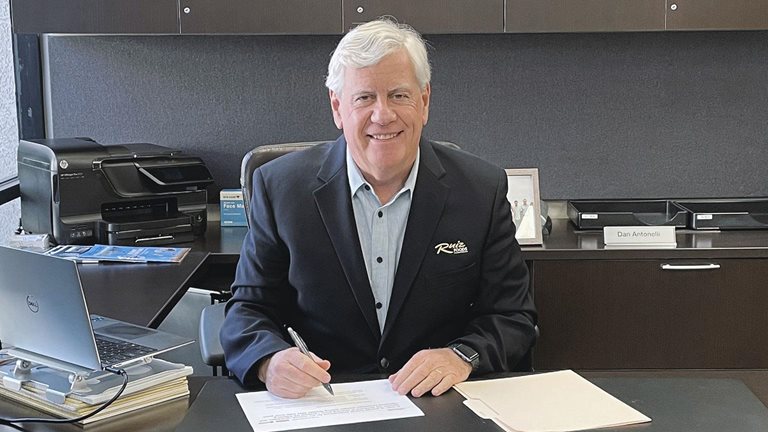

Transforming through disruption: A conversation with Dan Antonelli Dan Antonelli, CEO and president of Ruiz Foods, takes us through his company’s transformation journey and shares hard-won insights on how to drive sustainable and lasting change. Leave your comfort zone 


The data-driven enterprise of 2025 Rapidly accelerating technology advances, the recognized value of data, and increasing data literacy are changing what it means to be “data driven.” Increase data literacy 
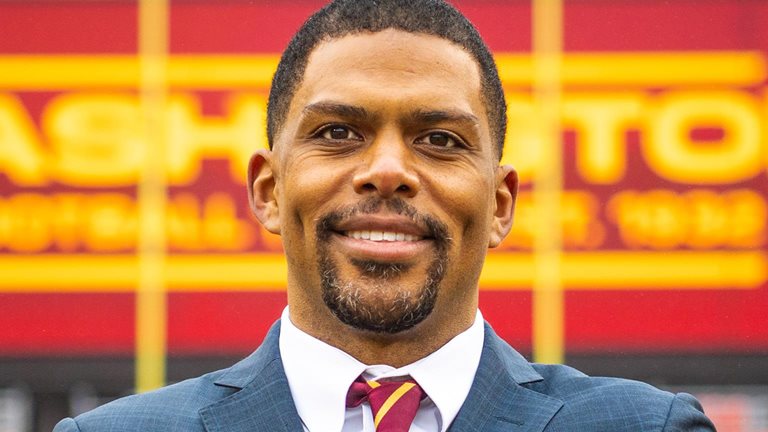

Always connect, never give up: An interview with Jason Wright As president of Washington’s football team, Wright is calling on his experiences as an NFL player, business school graduate, and McKinsey partner to change an entrenched culture. Go for your goals 


Follow our thinking 



Share these insights Did you enjoy this newsletter? Forward it to colleagues and friends so they can subscribe too.
Was this issue forwarded to you? Sign up for it and sample our 40+ other free email subscriptions here.This email contains information about McKinsey’s research, insights, services, or events. By opening our emails or clicking on links, you agree to our use of cookies and web tracking technology. For more information on how we use and protect your information, please review our privacy policy. You received this email because you subscribed to the Daily Read newsletter. Manage subscriptions | Unsubscribe Copyright © 2022 | McKinsey & Company, 3 World Trade Center, 175 Greenwich Street, New York, NY 10007
by "McKinsey Daily Read" <publishing@email.mckinsey.com> - 06:10 - 2 Feb 2022 -
Employers can help make working and parenting through the pandemic a bit less awful
McKinsey&Company
Working parents have it rough .

The parents, trapped The news • Groundhog Day. Amid the Omicron resurgence of the COVID-19 pandemic, thousands of schools have shifted back to remote learning. Once again, parents are struggling to cope with last-minute school cancellations, juggling work and childcare, and managing periods of quarantine. The difference this time around? They already know how hard it can get. [WSJ] • Baby bust. What has the pandemic cost the American population? There were 60,000 fewer babies born between October 2020 and February 2021. Couples daunted by starting a family, or adding to one, in isolation are reassessing their plans. The newborn deficit is larger in states where unemployment spiked and in those with more COVID-19 cases per capita and follows a historical pattern of low birth rates following major crises. [WaPo] 
Employed parents face higher numbers of and longer exposure to stressors from the multiple roles they play, and they have less ability to access periods of recovery as a result. 
Our insights • Burnout and missed work. Compared with nonparents, employed parents are twice as likely to strongly agree that they are worn out at the end of the day, used to find their work more interesting, and sometimes think their work is insignificant. Parents are also more likely than nonparents to report missing days of work because they are experiencing symptoms of burnout. • Helping workers cope. Parents experiencing burnout are 90% more likely to report that they believe senior management considers productivity to be more important than mental health. Read our article to learn the six main causes of burnout, in addition to ways employers can help workers cope with pandemic parenting. — Edited by Katy McLaughlin Help the parents 
Was this forwarded to you? Sign up here. Or send us feedback — we’d love to hear from you. 

Follow our thinking 


This email contains information about McKinsey’s research, insights, services, or events. By opening our emails or clicking on links, you agree to our use of cookies and web tracking technology. For more information on how we use and protect your information, please review our privacy policy. You received this email because you subscribed to the On Point newsletter. Manage subscriptions | Unsubscribe Copyright © 2022 | McKinsey & Company, 3 World Trade Center, 175 Greenwich Street, New York, NY 10007
by "McKinsey On Point" <publishing@email.mckinsey.com> - 10:14 - 1 Feb 2022


